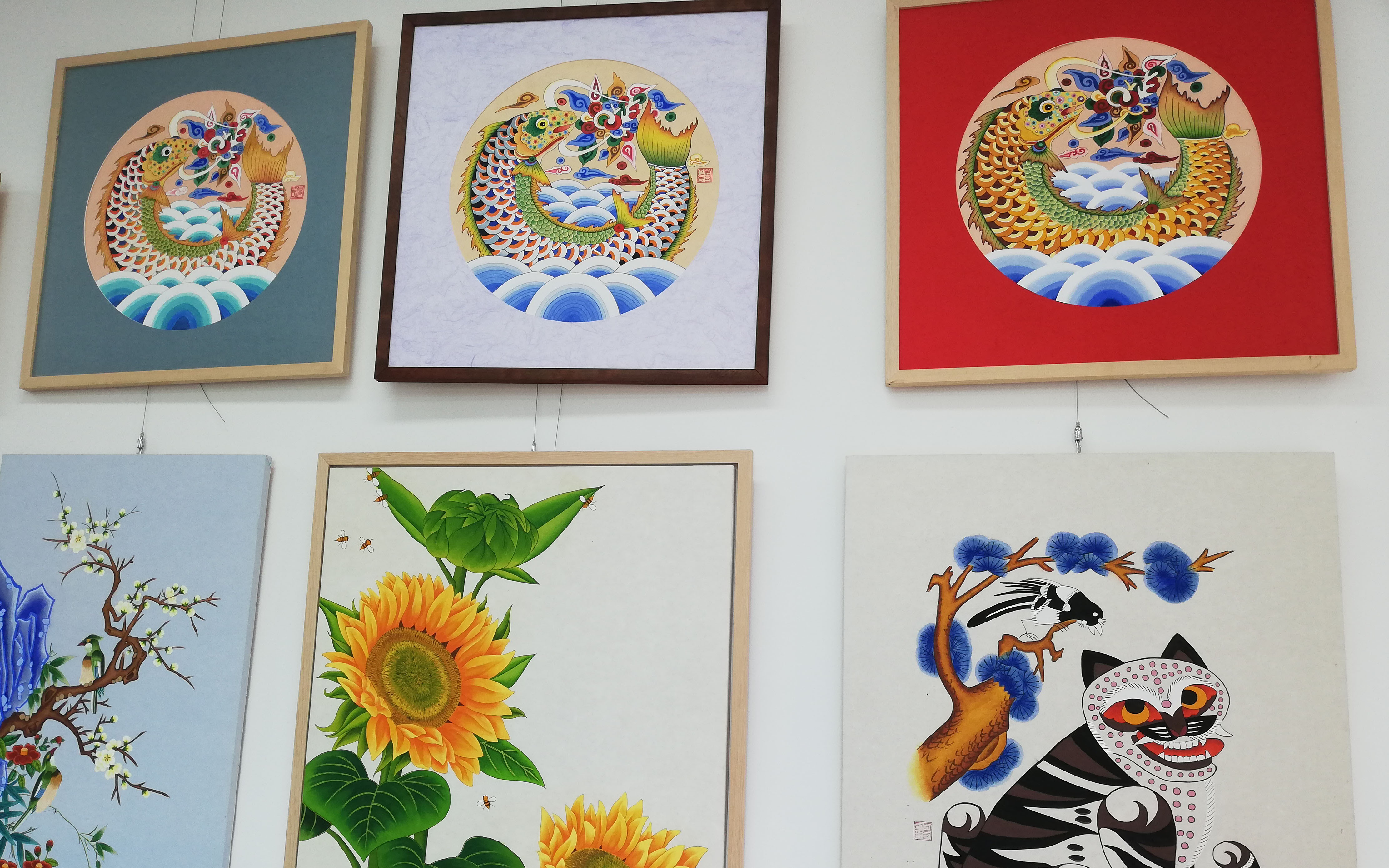View this article in another language
- 한국어
- English
- 日本語
- 中文
- العربية
- Español
- Français
- Deutsch
- Pусский
- Tiếng Việt
- Indonesian
By Honorary Reporter Sonya Galcheva from Bulgaria
Photos = Sonya Galcheva
 Having arrived in Busan three weeks ago, I can hardly begin to describe what I've seen and done here. But one of the most impressive things I've learned is making Hanji, or traditional Korean paper.
Having arrived in Busan three weeks ago, I can hardly begin to describe what I've seen and done here. But one of the most impressive things I've learned is making Hanji, or traditional Korean paper.
In trying to learn more about traditional Korean culture and life, I visited the Dakbatgol Village Festival on Oct. 5; the village's name is derived from its numerous mulberry trees. One theory on how the tree was named in Korean says it described the "dak" noise the branches make when broken.
The festival featured performances, exhibitions and experiential events under the theme of Hanji. One eye-catching event highlighted the village's history through Hanji fashion shows, traditional papermaking and folk painting, and exhibitions of Hanji crafts.
I didn't know much about Hanji other than that it's native to Korea and has unique properties, but what I later found out about it was fascinating. The paper is made from the bark of mulberry trees that grow on the Korean Peninsula, with trees on mountainsides preferred by Hanji makers.
The process of making the paper is long and slow and requires a lot of technique and attention. First a mulberry tree is cut down and steamed. After the bark is peeled off, it is dried under the sun for 24 hours. The bark is steamed again in an iron pot and immersed in caustic soda. The now-soft bark is smashed in stone mortar and then steamed again. These steps are repeated several times.
The result is that the bark turns into fiber, which is rinsed in cold water. The washed mulberry fiber is mixed with water and natural pine glue, and then a bamboo net is used to strain the water from the fiber and the glue. Depending on the paper's thickness, the amount of fiber used in the net varies. The thinner the paper, the better one is at the art of making Hanji. After squeezing the water from the net, the piece of paper is left to dry for six to seven hours under the sun.
Hanji is unique and valuable not only because of its demanding production process but also its properties; it's also famous for its durability over time. Documents written on Hanji have been discovered dating back 200 to 500 years, with the paper's use on the Korean Peninsula going back more than a millennium. The paper is also waterproof, and this is why it used to be applied in the making of upper layers of clothing. Nowadays this property comes in handy when making lanterns for colorful festivals from Hanji because rain doesn't affect the lanterns
chaey0726@korea.kr
*This article is written by a Korea.net Honorary Reporter. Our group of Honorary Reporters are from all around the world, and they share with Korea.net their love and passion for all things Korean.
Photos = Sonya Galcheva

In trying to learn more about traditional Korean culture and life, I visited the Dakbatgol Village Festival on Oct. 5; the village's name is derived from its numerous mulberry trees. One theory on how the tree was named in Korean says it described the "dak" noise the branches make when broken.
The festival featured performances, exhibitions and experiential events under the theme of Hanji. One eye-catching event highlighted the village's history through Hanji fashion shows, traditional papermaking and folk painting, and exhibitions of Hanji crafts.
I didn't know much about Hanji other than that it's native to Korea and has unique properties, but what I later found out about it was fascinating. The paper is made from the bark of mulberry trees that grow on the Korean Peninsula, with trees on mountainsides preferred by Hanji makers.
The process of making the paper is long and slow and requires a lot of technique and attention. First a mulberry tree is cut down and steamed. After the bark is peeled off, it is dried under the sun for 24 hours. The bark is steamed again in an iron pot and immersed in caustic soda. The now-soft bark is smashed in stone mortar and then steamed again. These steps are repeated several times.
The result is that the bark turns into fiber, which is rinsed in cold water. The washed mulberry fiber is mixed with water and natural pine glue, and then a bamboo net is used to strain the water from the fiber and the glue. Depending on the paper's thickness, the amount of fiber used in the net varies. The thinner the paper, the better one is at the art of making Hanji. After squeezing the water from the net, the piece of paper is left to dry for six to seven hours under the sun.
Hanji is unique and valuable not only because of its demanding production process but also its properties; it's also famous for its durability over time. Documents written on Hanji have been discovered dating back 200 to 500 years, with the paper's use on the Korean Peninsula going back more than a millennium. The paper is also waterproof, and this is why it used to be applied in the making of upper layers of clothing. Nowadays this property comes in handy when making lanterns for colorful festivals from Hanji because rain doesn't affect the lanterns
chaey0726@korea.kr
*This article is written by a Korea.net Honorary Reporter. Our group of Honorary Reporters are from all around the world, and they share with Korea.net their love and passion for all things Korean.